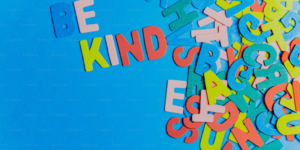Is your dating life colder than a polar landscape? If you’re wondering whether you’ll ever be asked out again, take heart—warming up your social life can be simpler than expected. Academically informed and practical, here are 18 evidence-based strategies to improve your dating prospects.
1.0 Embrace online dating
Online platforms offer vast access to potential partners beyond your existing social circle (Haas Berkeley Research, 2023). Studies show that crafting authentic yet appealing profiles, combining witty text and well-chosen photos, increases visibility and success (Haas Berkeley Research, 2023; Bruch and Newman, 2018).
2.0 Venture outside your usual routine
You won’t meet anyone by sitting at home. Accept invitations, reconnect with old friends, and attend local classes or events. This not only increases social exposure but also enhances confidence through positive interaction (Science of People, 2025).
3.0 Enrol in learning activities
Just as teenage classrooms once served as romantic hotspots, adult classes provide natural ice-breakers and opportunities to spark conversations over shared interests. Beginner learning environments encourage relaxed dialogues and repeated exposure to new contacts (Science of People, 2025).
4.0 Borrow a dog (figuratively or literally)
Dogs act as social lubricants, prompting conversations and easing first meetings in public spaces—even if it’s a borrowed canine companion (Science of People, 2025).
5.0 Balance work and play
Excessive work and lack of rest dull your personality and hamper social engagement. Research emphasises the importance of regular rest and boundaries for emotional availability (Financial Times, 2025).
6.0 Increase casual social chatter
Conversing with strangers in everyday situations helps you practise approachability and comfort with small talk—key to initiating romantic conversations naturally (Science of People, 2025).
7.0 Maintain eye contact
Simple but powerful: eye contact conveys confidence, warmth, and engagement—all qualities shown to attract dating interest (Science of People, 2025).
8.0 Dress in a way that boosts confidence
Your clothing communicates self-respect and social awareness. Choosing outfits you feel good in sends a message that you care about how you present—both to yourself and to others (Verywell Mind, 2023).
9.0 Take pride in your appearance
A touch of vanity—being well-groomed and put-together—reflects self-regard. Small personal-care actions can significantly enhance first impressions in romantic contexts (Rosenfeld and Thomas, 2012).
10.0 Expand your social circles
If all your friends are in couples, chances for introductions are limited. Join groups and networks with single people, especially friends-of-friends who may share interests and values (Science of People, 2025).
11.0 Don’t wait to make the first move
Direct communication is more effective than passive hope. Brief, friendly openers grounded in your environment or observation can break the ice and demonstrate confidence (Pew Research Center, 2023).
12.0 Build resilience to rejection
Rejection is inevitable—what matters is bouncing back. Individuals who reframe rejection as feedback rather than failure are more likely to try again with optimism (Seppala, 2016).
13.0 Let people know you like them
If you enjoy someone’s company, ask for their number or invite them for a coffee. Clear signals of interest reduce ambiguity and foster mutual responsiveness (Pew Research Center, 2023).
14.0 But don’t overdo enthusiasm
Being too aggressive can feel overwhelming. Respecting personal boundaries and pacing interactions to match both parties’ comfort levels is vital (Verywell Mind, 2023).
15.0 Speak less, listen more
Active listening makes you appear genuinely interested—an attractive quality. Communicators who ask follow-up questions and respond without interrupting are perceived as more engaging (Haas Berkeley Research, 2023).
16.0 Stop dwelling on your ex
Comparison with past partners often stalls new connections. Avoid mentioning exes in initial conversations unless a relationship becomes serious (SELF, 2025).
17.0 Stay open-minded about who you date
Focusing only on one “type” can be limiting. Many successful pairings happen between people who initially seemed different (Ivanova, 2023).
18.0 Take deliberate dating hiatuses
Sometimes pausing the search works better than pushing harder. Friend led introductions can spark more authentic matches than endless swiping (Business Insider, 2025).
Academic Insights Underpinning These Strategies
Systematic reviews (Machimbarrena et al., 2020) show that dating apps provide access, communication, and matching tools—changing the romantic landscape significantly. However, relationships from apps may be less stable than those formed offline (Hobbs et al., 2023). The “desirability hierarchy” suggests users often pursue those perceived as more attractive than themselves, reducing response rates (Bruch and Newman, 2018). Profile creation frequently involves curated self-presentation to reduce uncertainty (Gibbs et al., 2006).
References
Bruch, E.E. and Newman, M.E.J. (2018) ‘Aspirational pursuit of mates in online dating markets’, Science Advances, 4(8), pp. 9815.
Business Insider (2025) Americans have dating app burnout — let’s start setting up our friends. Available at: https://www.businessinsider.com/dating-app-fatigue-setting-up-friends-2025-7 (Accessed: 1 August 2025).
Financial Times (2025) How to balance your career and social life. Available at: https://www.ft.com/content/17fb28ae-1e0c-4a32-8c26-59e15c821a48 (Accessed: 1 August 2025).
Gibbs, J.L., Ellison, N.B. and Lai, C.H. (2006) ‘First comes love, then comes Google: An investigation of uncertainty reduction strategies and self-disclosure in online dating’, Communication Research, 33(2), pp. 152–177.
Haas Berkeley Research (2023) Research reveals the key to an irresistible online dating profile. Available at: https://newsroom.haas.berkeley.edu/research/research-reveals-the-key-to-an-irresistible-online-dating-profile (Accessed: 1 August 2025).
Hobbs, M., Owen, S. and Gerber, L. (2023) ‘Liquid love? Dating apps, sex, relationships and the digital transformation of intimacy’, Computers in Human Behavior, 144, 107730.
Ivanova, K. (2023) ‘Romantic relationships beyond type: Compatibility in diverse partnerships’, Population and Economics, 7(2), pp. 70–87.
Machimbarrena, J.M., Garaigordobil, M., Martínez-Valderrey, V. and González-Cabrera, J. (2020) ‘Online dating and problematic use: A systematic review’, International Journal of Environmental Research and Public Health, 17(21), 7852.
Pew Research Center (2023) Key findings about online dating in the U.S. Available at: https://www.pewresearch.org/short-reads/2023/02/02/key-findings-about-online-dating-in-the-u-s (Accessed: 1 August 2025).
Rosenfeld, M.J. and Thomas, R.J. (2012) ‘Searching for a mate: The rise of the Internet as a social intermediary’, American Sociological Review, 77(4), pp. 523–547.
Science of People (2025) First date tips. Available at: https://www.scienceofpeople.com/first-date-tips (Accessed: 1 August 2025).
SELF (2025) Questions to ask on a first date. Available at: https://www.self.com/story/questions-for-first-date (Accessed: 1 August 2025).
Seppala, E. (2016) The happiness track: How to apply the science of happiness to accelerate your success. London: Piatkus.
Verywell Mind (2023) Distracted dating: How to focus on your date. Available at: https://www.verywellmind.com/distracted-dating-interview-with-logan-ury-7976312 (Accessed: 1 August 2025).









